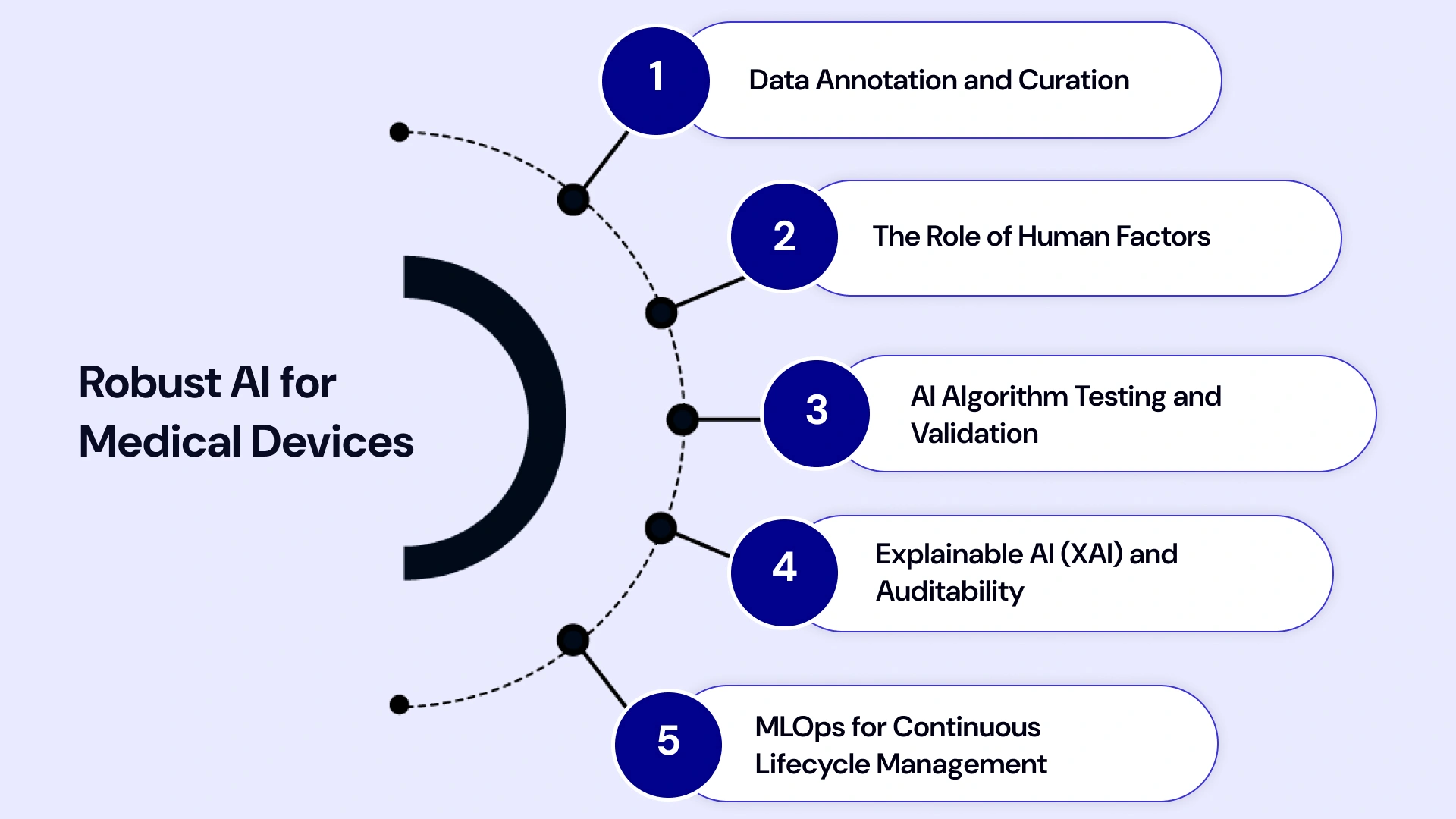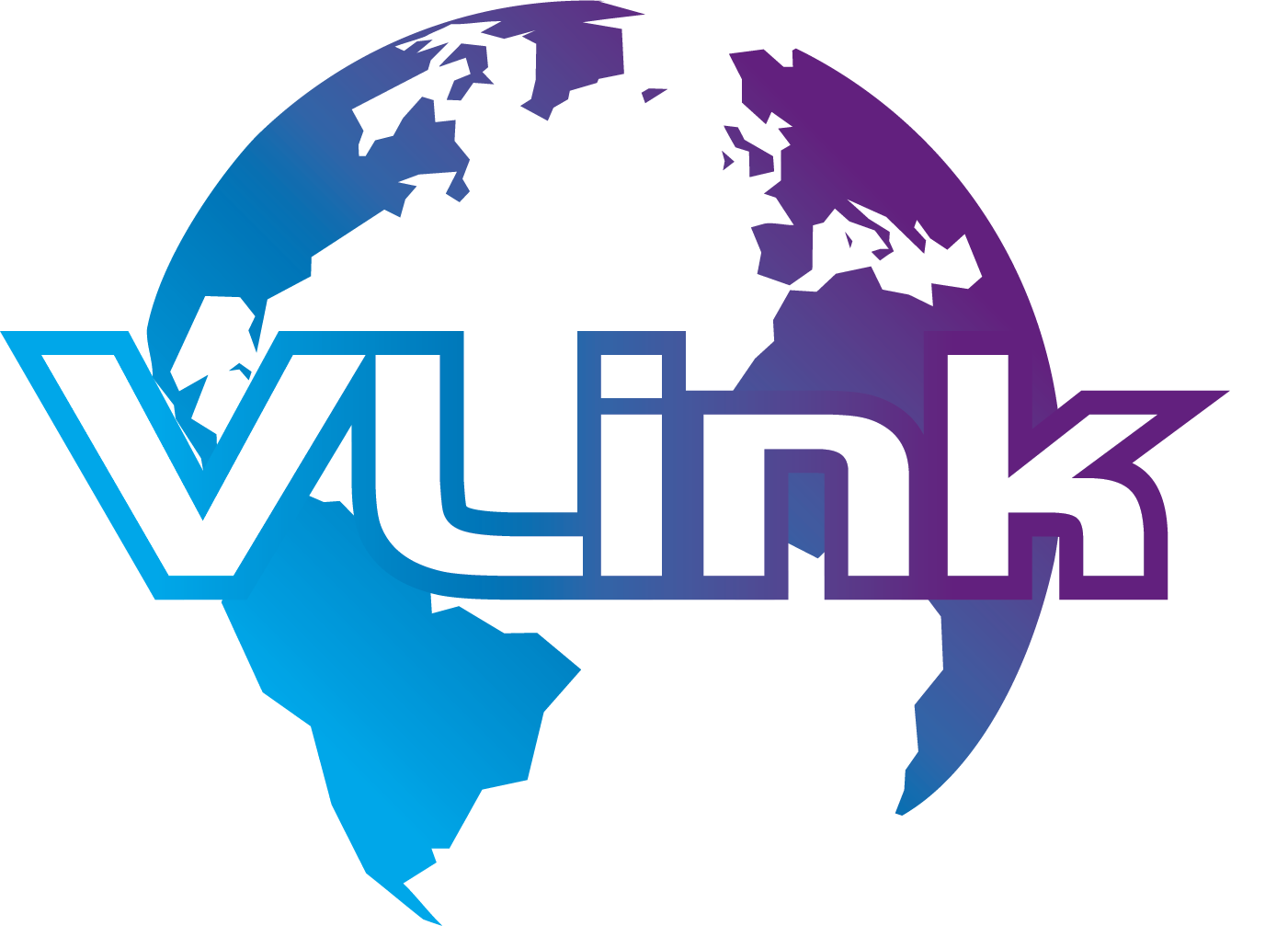The convergence of market demand, technological maturity, and regulatory clarity has positioned 2025 as the undeniable inflection point for AI in medical devices. This is the moment when Software as a Medical Device (SaMD) ceases to be an experimental frontier and becomes a core strategic pillar for every medical technology company and device manufacturer.
The stakes are higher than ever: leaders who invest strategically and secure robust compliance now will define the next decade of healthcare—those who hesitate to risk obsolescence.
The AI for Medical Devices Surge: Driving Forces in 2025
The sheer scale of growth and adoption confirms that AI for medical devices is the most significant technological shift in healthcare delivery since the introduction of electronic health records. The global market is surging, underpinned by clinical evidence that proves the value proposition of these innovative technologies.
Quantifying the Market and Adoption Momentum
The financial trajectory of AI in medical devices signals a rapid, massive shift in capital investment:
Hotspots of AI Application and Value Creation
The power of AI for medical devices is most transformative in areas where speed and pattern recognition are critical:

1. Diagnostic Imaging Dominance: This remains the most mature and revenue-generating application. AI algorithms for medical imaging devices, utilizing advanced deep learning models for medical imaging, can triage critical cases, detect subtle radiological findings, and provide quantitative analysis in seconds, thereby supporting radiologists in improving both speed and accuracy.
2. Patient Monitoring and Predictive Care: The shift from reactive to predictive care is driven by AI-powered real-time patient monitoring devices. These systems analyze streams of vital signs, physiological data, and ambient sensor data to predict conditions such as sepsis, cardiac arrest, or acute deterioration hours before manual detection. AI for wearable medical devices (like smart patches and continuous glucose monitors) extends this predictive capability into the home, enabling true remote patient monitoring systems.
3. Advanced Interventional Systems: AI for surgical robotics is moving beyond simple control. AI algorithms assist in preoperative planning, intraoperative guidance, and automated adjustments, enhancing the precision and safety of complex procedures. This requires continuous validation of AI/ML models for SaMD to ensure safety in critical applications.
4. Specialty Diagnostics: The application of AI for pathology diagnostics is accelerating the analysis of digital slides, offering objective and rapid detection of diseases. Similarly, AI in cardiology devices and AI in orthopedic devices are revolutionizing analysis and personalized treatment planning.
The New Regulatory Compass: AI Compliance and the PCCP
The central regulatory challenge for AI in healthcare devices is managing their inherent adaptability. Traditional approval processes were based on static devices; AI models, on the other hand, are dynamic. The FDA, recognizing this, has shifted its focus toward a Total Product Lifecycle (TPLC) approach, exemplified by the Predetermined Change Control Plan (PCCP).
A. The FDA’s Game-Changer: The Predetermined Change Control Plan (PCCP)
The PCCP, which is now moving from draft guidance into practical implementation, is the single most critical document for any SaMD development company. It provides a mechanism for device manufacturers to outline planned modifications to an AI/ML model’s performance or inputs—such as retraining the model on a new data type or improving its accuracy for a specific subpopulation—without requiring a new major regulatory submission for every change.
Key components of the PCCP that require expert AI Development Services:
1. The Change Protocol: This mandates that developers explicitly define the types of changes they intend to make post-market (e.g., performance updates, input data changes) and the methods they will use to develop, validate, and implement those changes.
2. Acceptance Criteria: The manufacturer must set scientifically and clinically justified pre-specified performance limits (e.g., sensitivity must remain above 95% in a minority group). If the updated AI model meets these criteria, the change can be implemented without a new FDA review.
3. Impact Assessment: A plan for rigorous, continuous post-market monitoring using real-world evidence (RWE) for SaMD to confirm that the change has not introduced new safety risks or algorithmic bias.
Mastery of the PCCP is the difference between agile market leadership and being bottlenecked by years of iterative regulatory submissions. Specialized AI development services for medical devices are crucial for developing a PCCP that optimizes innovation while ensuring complete adherence to the AI compliance requirements for medical devices. This is particularly vital for AI in Class II and Class III medical devices, where the risk profile is highest.
B. Global Standards and Good Machine Learning Practice (GMLP)
Compliance is increasingly a global undertaking, driven by coordinated efforts from international regulators.
Good Machine Learning Practice (GMLP): This set of foundational principles provides the technical and procedural blueprint for responsible development of machine learning for medical devices. GMLP ensures that models are robust, unbiased, and transparent.
The principles emphasize:
- Data Governance: The quality and diversity of training data are paramount for mitigating algorithmic bias and ensuring the generalizability of AI for FDA-approved medical devices.
- Model Management: Thorough documentation of the model’s intent, performance characteristics, and protocols for handling out-of-distribution data.
- Continuous Learning: Establishing a robust system for post-market surveillance for AI devices and updating models safely under the PCCP framework.
International Alignment: The EU AI Act and Health Canada’s alignment with IMDRF guidance impose strict requirements on data governance for AI in clinical practices and medical devices. Compliance now demands an integrated global strategy, making expert AI medical device development services that span these jurisdictions non-negotiable.
Innovation Framework in SaMD: The Tech & Development Imperative
Building successful, compliant AI-enabled medical devices requires shifting from traditional software engineering to specialized AI/ML engineering for medical devices. This demands a new toolkit, a focus on data quality, and specialized validation protocols.
Building Robust AI-Powered Medical Device Solutions
The development pipeline for custom software development services in Medtech must be centered on reliability and transparency:

1. Data Annotation and Curation: The performance ceiling of any AI model is determined mainly by the quality of the data. It is trained on Professional data annotation for medical AI, ensuring accuracy, consistency, and adherence to compliance standards. Datasets must be curated to accurately reflect the diversity of the real-world population, thereby mitigating algorithmic bias.
2. The Role of Human Factors: An accurate AI model is useless if clinicians won't adopt it. Human factors engineering for AI medical devices focuses on seamless integration into the clinical workflow, designing interfaces that foster physician trust and clearly communicate the model's output, limitations, and confidence levels.
3. AI Algorithm Testing and Validation: This involves rigorous, multi-site testing of AI algorithms for medical devices to confirm performance across diverse demographics, imaging machines, and clinical settings. A successful regulatory submission hinges on robust AI medical device validation services proving safety and effectiveness.
4. Explainable AI (XAI) and Auditability: For high-stakes decisions, the "black box" is unacceptable. Explainable AI (XAI) for SaMD is a regulatory and ethical necessity. Developers must engineer models to provide clear, auditable explanations for their predictions, which is vital for clinical acceptance and mandatory for compliance with GMLP principles and the justification of adverse events.
5. MLOps for Continuous Lifecycle Management: The dynamic nature of AI demands a specialized operational framework. MLOps (Machine Learning Operations) automates the process of deploying, monitoring, and updating models in a controlled, compliant environment. This infrastructure is essential for AI lifecycle management for medical devices, allowing manufacturers to detect model drift in real-time and implement safe, pre-approved updates under the PCCP framework.
Operationalizing and Scaling AI: Cloud and Lifecycle Management
The ability to scale and maintain AI models for post-launch is the key commercial challenge.
- AI Cloud Integration for Medical Devices: Modern SaMD innovations rely on secure, scalable cloud platforms (like AWS, Azure, or GCP) for deployment. Cloud integration facilitates real-time data processing for AI for medical IoT devices, supports global deployment, and provides the necessary infrastructure for secure and rapid model updates under the PCCP.
- AI Lifecycle Management for Medical Devices: This refers to the continuous cycle of monitoring, updating, and revalidating an AI model after it has been deployed and implemented. It encompasses MLOps (Machine Learning Operations) tailored for medical-grade security and compliance. A successful lifecycle management plan prevents model drift and ensures the device maintains its AI compliance, thereby maintaining the medical device's status.
Operationalizing AI: Impact on the Enterprise Value Chain
The transformative power of artificial intelligence in healthcare devices extends beyond the patient care setting, optimizing core business operations for Medtech companies.
Efficiency in Manufacturing and Maintenance
- AI for Predictive Maintenance of Medical Equipment: By utilizing sensor data and machine learning, AI can accurately predict the failure of complex medical equipment (e.g., surgical robots, diagnostic imaging systems). This reduces unplanned downtime, optimizing resource allocation, and dramatically lowering maintenance costs—a direct impact on profitability.
- Process Optimization: AI in medical device manufacturing utilizes machine learning to analyze production data for medical devices, identify bottlenecks, and automate complex quality control checks, thereby ensuring higher consistency and reducing waste.
Cybersecurity in the Connected Ecosystem
The rise of AI for medical IoT devices makes robust security essential. Cybersecurity for AI-enabled medical devices must be designed and architected from the outset to ensure optimal protection.
This includes protecting the integrity of the data used to train the model, securing the cloud infrastructure services where the model resides, and implementing multi-layered controls to prevent unauthorized access or manipulation that could lead to clinical harm.
Clinical Transformation in SaMD: Deepening AI Applications
The true measure of AI for medical devices is its impact on clinical outcomes. AI is deepening its penetration into clinical specialties, moving toward personalization and prevention.
Advances in Diagnostics and Management
- AI in Radiology Devices & Pathology: These systems are evolving toward complete quantitative analysis and automated reporting, thereby reducing human transcription errors and providing objective data for clinical decision support.
- Personalized Interventions: AI for diabetes management devices uses patient-specific glucose data, lifestyle inputs, and past trends to create highly customized insulin dosing recommendations, leading to better glucose control and reduced long-term complications.
- AI in Surgical Robotics: This application is evolving to incorporate AI for surgical robotics that can analyze anatomical variations in real-time, assisting surgeons with complex tasks such as identifying optimal cutting planes or detecting subtle nerve pathways.
The most valuable AI-powered medical device solutions are those that operate seamlessly within a larger digital health platform. This enables the integration of data from multiple sources (EHR, wearables, diagnostics) to generate highly contextualized and actionable insights, facilitating end-to-end SaMD development that maximizes clinical utility.
Compliance, Safety, and the Lifecycle Mastery for Medtech
For Medtech companies seeking long-term success, prioritizing compliance and safety over speed is the only viable route.
The Importance of Validation and Clinical Evaluation
Regulatory bodies now require irrefutable proof of clinical performance. This requires:
- Clinical Evaluation for AI-Based Devices: Beyond bench testing, this involves real-world clinical studies that demonstrate the AI's effectiveness in its intended use environment, particularly for AI in Class II and Class III medical devices.
- AI Medical Device Validation Services: Leveraging independent, external firms for validation and auditing provides an objective assessment of the model's robustness and significantly reduces the risk associated with the regulatory submission process.
Post-Market Surveillance and RWE
The requirement for robust post-market surveillance for AI devices is where the rubber meets the road. Manufacturers must not only track adverse events but also continuously monitor the performance of AI models to detect any potential performance drift.
RWE generated from actual clinical use is critical for supporting ongoing claims, driving model updates, and providing the data required for continuous improvement under the PCCP.
Humanizing AI: Trust, Ethics, and the Future of Work
The ethical and societal considerations of artificial intelligence and machine learning in healthcare are as paramount as technology itself. For AI in medical devices to realize its full potential, MedTech companies must proactively manage the ethical, social, and professional implications of their solutions.

Building Trust through Transparency
Physician and patient adoption hinges on trust.
- Explainable AI (XAI) and Clarity: Developers must strive for explainable AI (XAI)—algorithms whose rationale can be understood by clinical users. This transparency, combined with rigorous human factors engineering, ensures that clinicians view the AI not as a black box, but as a trusted, high-performance colleague.
- Mitigating Deskilling and Professional Autonomy: Ethical considerations, such as ensuring AI remains supportive rather than autonomous, must guide the development process. The goal is augmentation, not replacement, maintaining the professional autonomy of the clinician.
- Informed Consent for AI-Driven Decisions: For patient-facing AI-enabled medical devices, clear communication regarding the AI's role is mandatory. Patients must provide informed consent, understanding whether the device is providing diagnostic information, recommending a therapy, or simply monitoring data.
Data Governance and Privacy
Adherence to strict data governance for AI in medical devices is the ethical baseline.
- Regulatory Compliance: Compliance with HIPAA (US), PIPEDA (Canada), and GDPR (EU) is non-negotiable. Robust governance builds patient confidence and ensures the integrity and privacy of the massive datasets required to train and maintain high-performance AI for medical devices.
- Data Integrity and Security: Implementing high-level cybersecurity for AI-enabled medical devices is crucial for ensuring data integrity and security. This extends beyond protecting patient health information (PHI) to ensure the integrity of the data used to train, test, and update the AI model itself, preventing malicious manipulation that could lead to clinical harm.
- Data Provenance and Audit Trails: Effective governance requires a complete record of data lineage. Data provenance ensures that every piece of data used for model training and every subsequent model update is traceable to its source. Comprehensive audit trails are mandatory for regulatory scrutiny, enabling Medtech companies to demonstrate precisely which data informed each version of the AI algorithm, thereby linking back directly to GMLP and PCCP documentation requirements.
Addressing Algorithmic Bias and Equity
For AI to transform healthcare faster and benefit all populations, developers must actively combat bias.
- Bias Mitigation and Data Diversity: AI for medical device development must utilize diverse, representative datasets to train models. Rigorous testing is required to identify and mitigate algorithmic bias that could lead to unequal performance or health inequities across different demographic groups (e.g., race, gender, age).
- External Auditing and Validation: To ensure impartiality, AI compliance for medical devices increasingly benefits from independent, external auditing of training data and model performance. This objective review strengthens regulatory submissions and enhances public trust in the clinical equity of the solution.
- Continuous Performance Monitoring: Equity is not a one-time check. Manufacturers must incorporate real-time post-market surveillance to continuously monitor the AI model's performance metrics (e.g., sensitivity, specificity, positive predictive value) separately across defined patient subgroups. If performance drift is detected in a specific demographic, the company must initiate a remediation plan under the PCCP to re-establish clinical equity.
Commercial Opportunity: Strategic Investment in SaMD Development
The current landscape strongly favors Medtech companies that engage in strategic partnerships to secure both innovation and compliance simultaneously. This is the fastest, most effective path to capturing market share.
Leveraging Specialized External Expertise
The complexity of AI for medical devices is often too great for internal teams alone. Outsourcing specific, high-risk functions to specialized firms provides critical leverage:
Key Service | Strategic Commercial Advantage |
End-to-End SaMD Development | Accelerates time-to-market by integrating clinical, regulatory, and technical expertise under one roof, reducing risk and cost. |
AI Compliance Consulting for Medical Devices | Guarantees adherence to the PCCP and GMLP, ensuring efficient navigation of the regulatory pathways for AI medical devices and avoiding costly regulatory delays. |
Full-Stack AI/ML Engineering for SaMD | Accesses the deep expertise required for deep learning models for medical imaging and complex data architectures, which are often scarce and expensive to hire internally. |
AI Medical Device Development Services | Provides rapid prototyping and validation, allowing the company to test multiple AI algorithms for medical imaging devices or monitoring systems quickly before committing to large-scale deployment. |
Market leaders are targeting specific clinical problems where AI provides a definitive, measurable advantage: AI in pathology diagnostics, AI for remote patient monitoring systems, and specialized AI in cardiology devices. Leveraging custom software development services enables a manufacturer to create a proprietary solution tailored to its niche, thereby establishing a highly defensible market position.
Choose VLink: Your Competitive Edge in SaMD Innovation
The path through the 2025 inflection point is challenging, requiring a highly specialized blend of clinical, regulatory, and technical expertise. VLink is positioned as the ideal strategic partner to guide Medtech companies and device manufacturers through this complex landscape, turning regulatory compliance into a commercial accelerator.
Choose VLink Healthcare Software Development Services for:
1. End-to-End SaMD Innovation and Speed-to-Market
We provide comprehensive end-to-end SaMD development, managing the entire product lifecycle from ideation and data strategy to final deployment and post-market maintenance. Our dedicated teams streamline the process of building AI-powered medical device solutions, allowing you to bypass internal learning curves and achieve rapid time-to-market.
- Custom AI/ML Engineering: Expertise in developing proprietary, high-performance AI algorithms for medical imaging devices, AI for real-time patient monitoring devices, and deep learning models for medical imaging.
- Full-Stack Deployment: Utilizing secure AI cloud integration for medical devices to ensure scalable, compliant, and globally deployable solutions.
2. Guaranteed AI Compliance and Regulatory De-Risking
Navigating the FDA’s PCCP, GMLP, and the EU AI Act requires highly current, specialized knowledge. VLink transforms compliance from a bottleneck into a competitive advantage, providing you with confidence in your regulatory submissions.
- PCCP Strategy and Documentation: Hire our skilled developers to develop the forward-looking Predetermined Change Control Plan (PCCP) required by the FDA, enabling you to implement planned model updates efficiently without repeated major submissions.
- GMLP and Validation: Providing robust AI medical device validation services and executing multi-site clinical evaluation for AI-based devices that meet Good Machine Learning Practice (GMLP) standards. Our focus on data governance for AI in medical devices ensures your datasets are audit-ready, unbiased, and compliant with global privacy laws.
3. Integrated Human Factors and Clinical Adoption
We ensure that your AI-enabled medical device is not only accurate but also clinically useful and effective. Adoption relies on trust and seamless integration into the physician’s workflow.
- Human Factors Engineering: Designing intuitive interfaces and decision support systems to maximize physician trust and minimize use error, a critical requirement for AI for FDA-approved medical devices.
- Real-World Evidence (RWE) Programs: Establishing continuous post-market surveillance for AI devices and RWE collection frameworks necessary for ongoing model improvement, regulatory reporting, and supporting reimbursement claims.
By choosing VLink, you gain a partner that delivers the technical excellence of healthcare software development services, combined with the specialized regulatory rigor required for AI in the medical devices sector, ensuring your innovation is both powerful and compliant.
Conclusion
The year 2025 represents a critical juncture for the AI for medical devices industry. The convergence of a $488.6 billion market forecast, a clear FDA regulatory path (PCCP), and a mandate for GMLP compliance has created a high-stakes environment. Medtech companies and device manufacturers are now in a race to implement and scale compliant AI-powered medical device solutions.
This is not a time for incremental change; it is a time for strategic, decisive investment. Success hinges on a clear vision for AI for medical device innovation coupled with an expert command of the technical and regulatory frameworks.
To lead in this new era, your strategy must encompass:
1. Compliance as a Competitive Advantage: Treat the PCCP and GMLP not as obstacles, but as the essential architecture for scalable, trustworthy innovation.
2. Strategic Partnership: Leverage expert AI medical device development services and AI compliance consulting for medical devices to gain speed, reduce regulatory risk, and acquire top-tier AI/ML engineering for medical devices immediately.
3. End-to-End Lifecycle Mastery: Invest in robust AI lifecycle management for medical devices, including RWE collection and post-market surveillance for AI devices, to ensure sustained performance and compliance.
The future of healthcare delivery is being written now. Will your organization be among the innovators leading the charge, defining the gold standard for AI for medical devices? Contact Us Today to secure your competitive advantage.
Our firm delivers full-stack, end-to-end SaMD development, regulatory strategy, and specialized AI compliance consulting for medical devices, helping you successfully launch your next-generation AI-enabled medical device in the market. Unlock commercial success with expertise you can trust.










 Shivisha Patel
Shivisha Patel
















